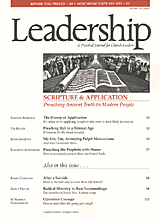 |
Achtemeier, Elizabeth. "Preaching the Prophets with Honor." Leadership Journal, Fall 1997 Distinguished homiletics professor discusses issues of preaching prophetic books, often the least preached part of the Scriptures. Achtemeier develops four significant (though often overlooked) features of the Prophets which ought to be reflected in preaching and teaching from the prophets. |
|---|---|
 |
Bock, Darrell . "Evangelicals and the Use of the Old Testament in the New ." Bibliotheca Sacra , 142 (1985) 209-223, 306-319. In a two-part article, Dallas Research Professor of New Testament Studies, Professor of Spiritual Development and Culture discusses the lack of consensus among evangelicals with respect to issues surrounding the N.T. use of the O.T. |
 |
Blomberg, Craig L. "Interpreting Old Testament Prophetic Literature in Matthew: Double Fulfillment," Trinity Journal 23NS (2002) 17-33 Updates two decades of conversation on the NT's use of OT prophets. Blomberg argues from his work in Matthew and Isaiah for a "double fulfillment" while rejecting the "sensus plenior" idea. He concludes that Matthew understood certain prophecies with greater content than did the OT prophet but that Matthew understood Isaiah "consciously to have intended his oracles to refer to events both in the near and the more distant future." |
 |
Carson, Donald A. . "New Perspectives on Paul" Lecture series. Constructive critique of what is commonly refered to as "new perspectives on Paul" by Research Professor of N.T., Trinity Evangelical Divinity School, delivered at Reformed Seminary, Charlotte, April 2005. The issues raised by the NPP discussion include hermeneutics and exegesis, the continuity and discontinuity between the Testaments. These have bearing on one's understanding of the theology of the Hebrew Bible as well as the N.T. Lecture One; Lecture Two; Lecture Three |
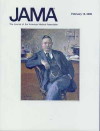 |
Edwards, Wm., M.D., W. Gabel, M.Div., F. Hosmer, M.S., A.M.I. "On the Physical Death of Jesus Christ," Journal of the American Medical Association, 256 (21 Mar 1986) 1455-1463 Isaiah, in the unit 52:13-53:12, uses rather graphic language to describe the enormity of the price of atonement and the severity of its punishment as borne by the Suffering Servant. The Gospels record how Isaiah's teaching about the atonement in the trials, torture and death of the Suffering Servant is actualized Jesus of Nazareth in the events leading up to and including his crucifixion. |
 |
Ferris, Paul. "Prophecy & Renewal: Historical Synopsis" A reader's brief on the geopolitical setting of the prophets. It includes a brief on the social and spiritual situation of the prophets and their first audience as well as links to background graphics and primary source texts. |
 |
Habel, Norman. “The Form and Significance of the Call Narratives.”ZAW 77 (1965): 297-323. Discusses call narratives found in the Hebrew Bible with special focus on the "callings" of Isaiah, Jeremiah and Ezekiel. |
 |
Kaiser, Walter. "Inner Biblical Exegesis as a Model for Bridging the "Then" and "Now" Gap: Hos. 12:1-6." JETS 28/1 (1985) 33-46. Kaiser does a "case study" of biblical exegesis and the distinction between the meaning of an ancient text and the significance of that single meaning for others in a different time and place. |
 |
Kaiser, Walter. "The Single Intent of Scripture ." in Evangelical Roots, ed. Kenneth S. Kantzer, 123-141. Nashville: Nelson, 1978.. Reminiscent of the discussion regarding consitutional law, Kaiser tackles subjectivism in evangelical exegesis. From historical and exegetical data, he argues with a dual-author (God & human) claim of "double-meaning" or sensus plenior in favor of an original single intent. |
 |
Malamat, Abraham. "A Forerunner of Biblical Prophecy." In Ancient Israelite Religion, edited by Patrick Miller, Paul Hanson, and S. Dean McBride. Phila.: Fortress, 1987: 33-52 Compares and contrasts prophets and prophecy depicted in letters from Mari early in the second millennium BC with that of the Hebrew Bible. |
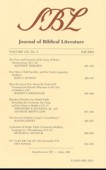 |
Meek, Theophile J. "The Syntax of the Sentence in Hebrew." JBL, 61/1 (1945): 1-13 The late Univ. of Toronto professor's Presidential Address to the Society of Biblical Literature in which he deals with the contributions to greater translation accuracy and clarity when the distinctive syntax of biblical Hebrew is understood. |
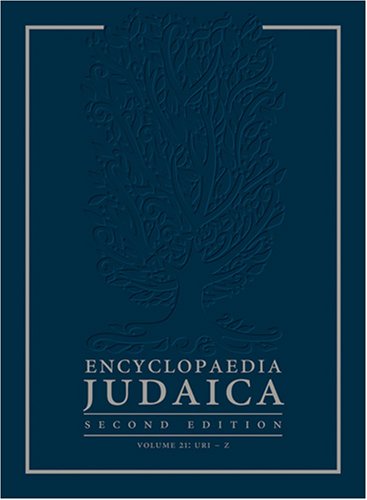 |
Paul, Shalom & S. David Sperling. "Prophets and Prophecy." In Encyclopedia Judaica, 2nd ed., vol. 16. Edited by M. Berenbaum and F. Skolnik. Detroit.: Macmillan, 2007: 566-586 Discusses prophets and prophecy in the Hebrew Bible, Talmud, Jewish philosophy and modern Jewish thought. Bibliography. (Link takes you to html display. PDF format also available) |
 |
Robinson, Haddon. "The Heresy of Application," Leadership Journal, Fall, 1997 With respect to the ministry of preaching, Robinson is one of North America's leading thinkers and practitioners. He is interviewed on how Scripture is used in preaching and teaching and he warns of the "heresy of application." |
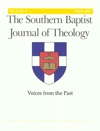 |
Schreiner, Thomas . "Preaching & Biblical Theology ," Southern Baptist Journal of Theology, 10,2 (Summer 2006). Former Bethel Seminary professor, presently holds a chair in NT at Southern Seminary where he serves as Assoc. Dean for Scripture & Interpretation. The article focuses on issues related to preaching but is just as applicable to teachers and counsellors committed to proclaiming the whole counsel of God. |
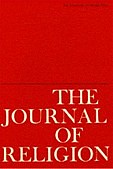 |
Zachman, Randall. "Gathering Meaning from the Context: Calvin's Exegetical Method." JR, 82/1 (2002): 1-26. Notre Dame professor of Historical Theology examines Jean Calvin's method of ascertaining meaning from the context of Scripture in light of 19th-20th cent. historical-critical method. Zachman seeks to demonstrate that Calvin wrestles with two issues: first, what does the text mean in light of its relationship to other scriptural and extrascriptural texts? And second, what does the text mean in light of the nature and activity of God? |
N.B., These are copyrighted materials made available by permission only to students enrolled in the course. Check your Blackboard Announcements for details.
